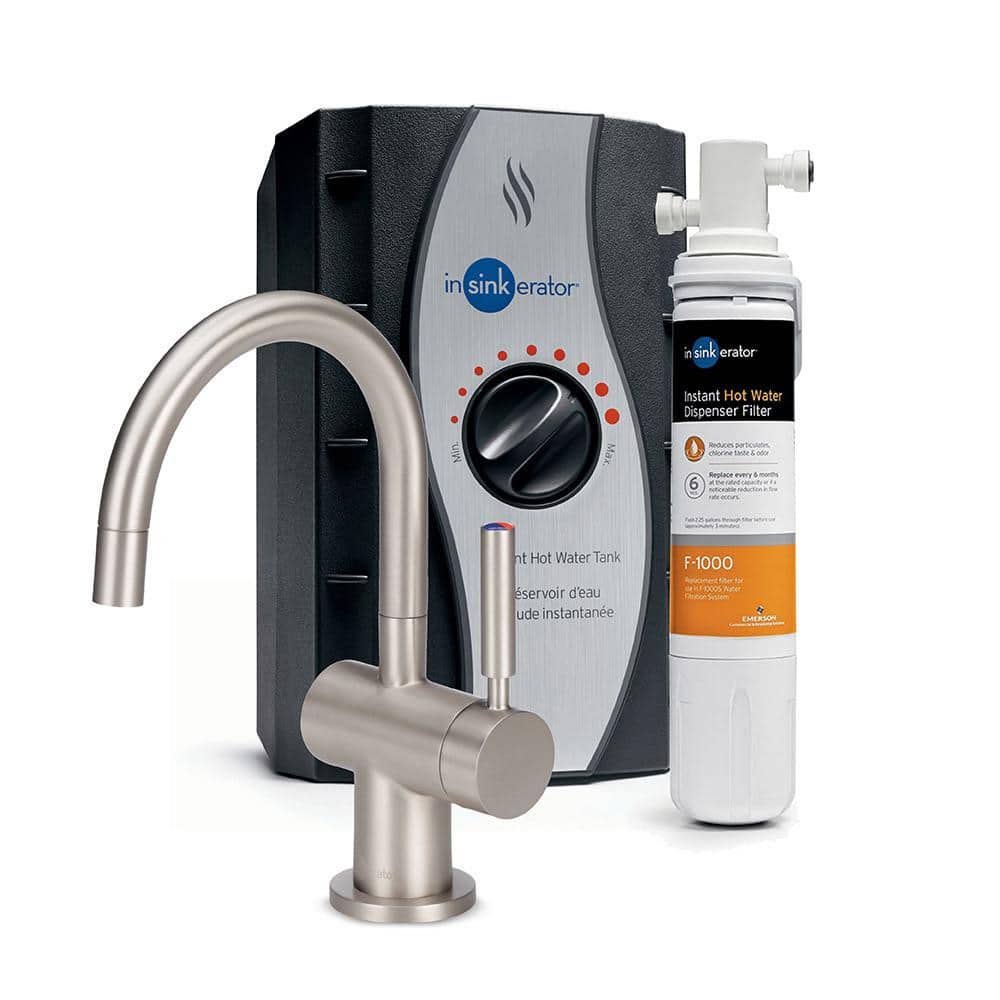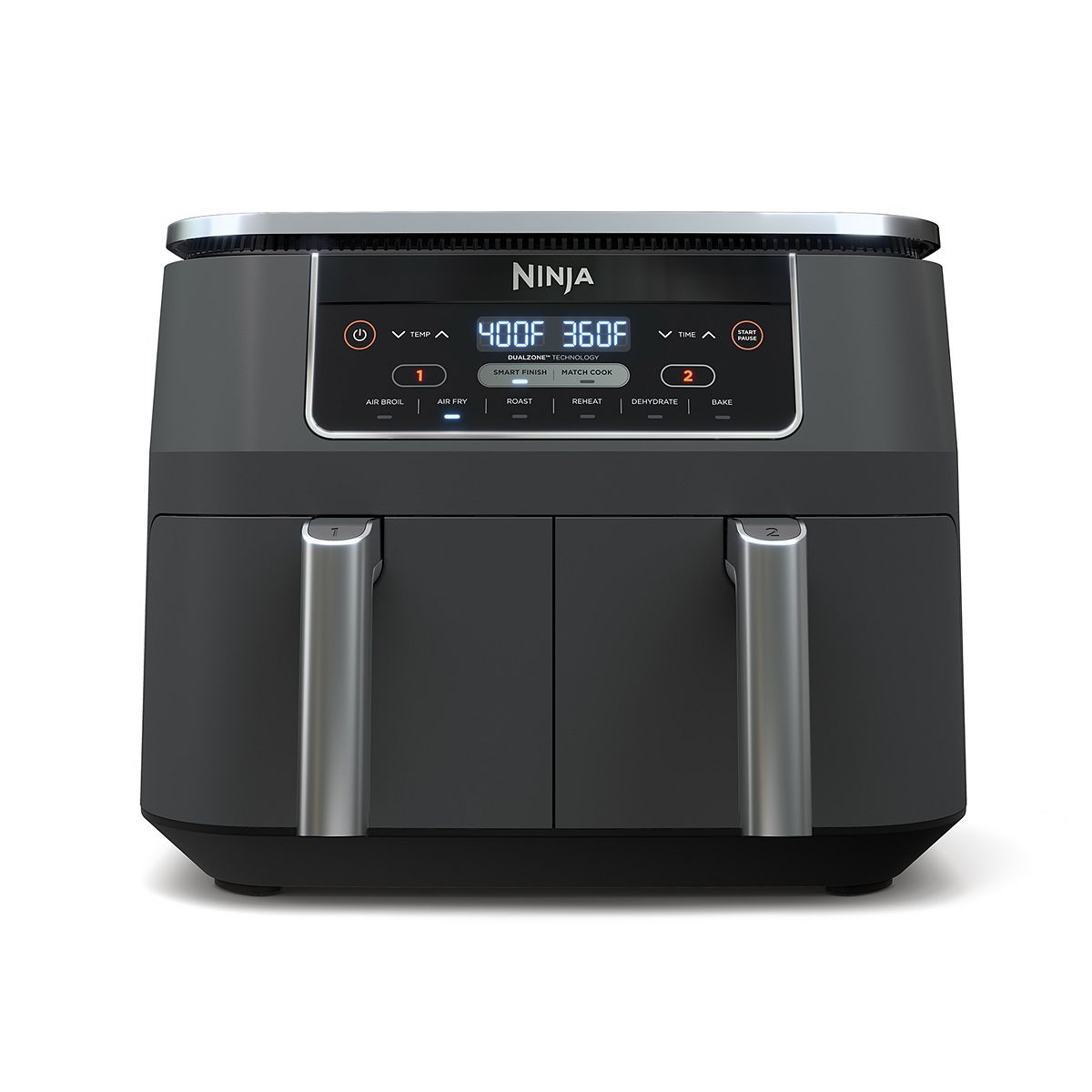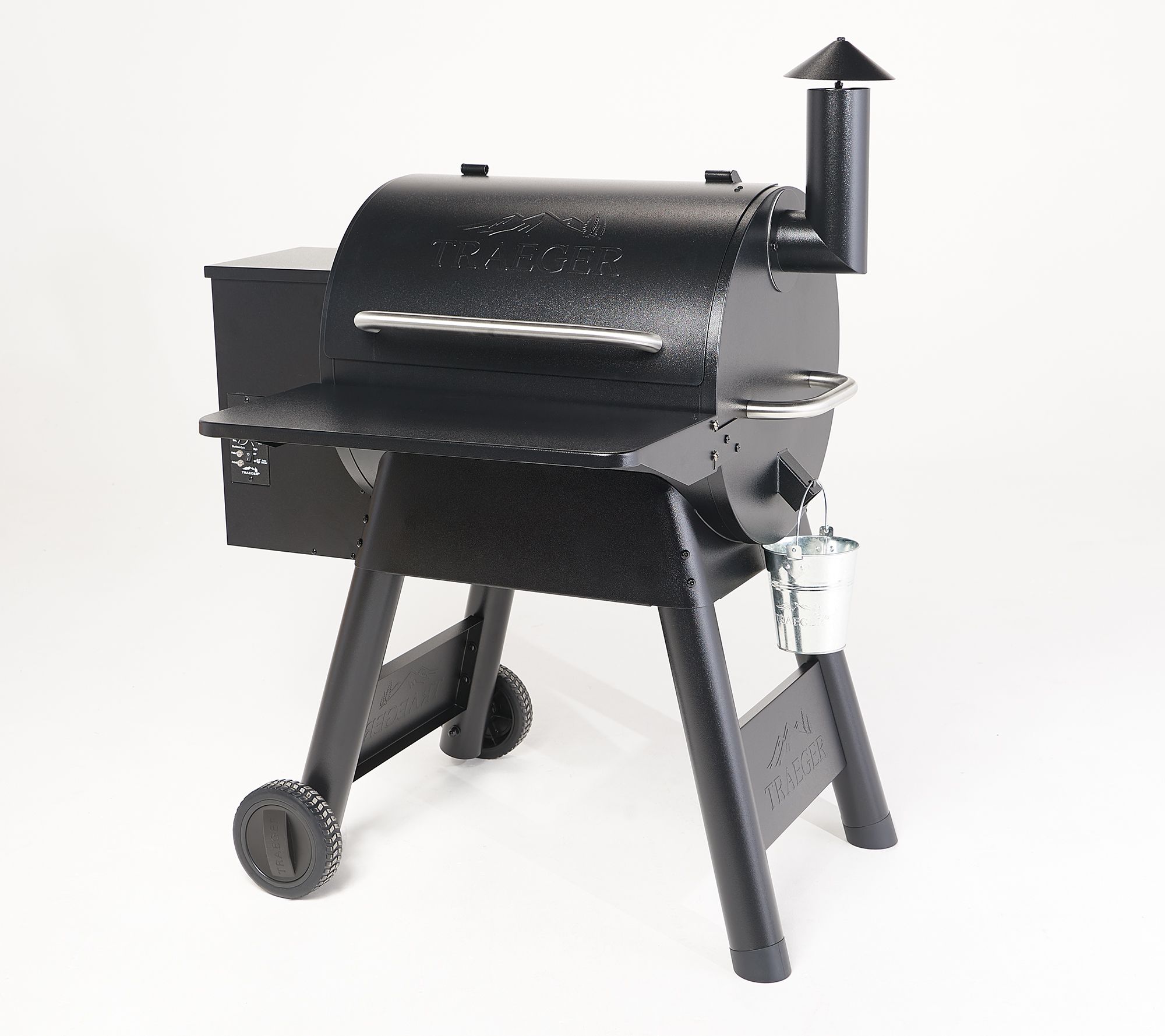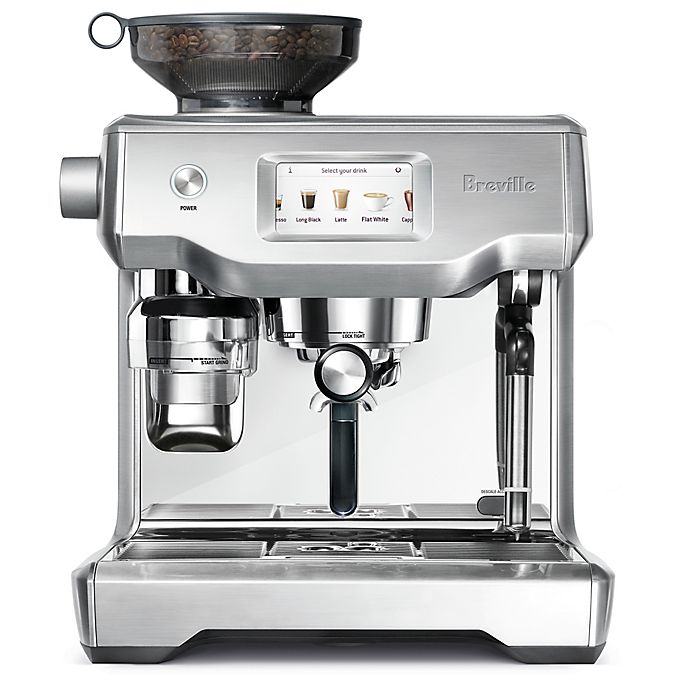InSinkErator Indulge Modern Instant Hot & Cold Water Dispenser Tank with Standard Filtration & 1-Handle 9.25 in. Faucet in Satin Nickel
Includes Standard Filtration Sytem & 1-Handle Swivel Faucet. 2/3 Gal. Tank with Adjustable Temperature (160°F – 210°F). Backed by our 5-Year “We Come to You” Limited In-Home Warranty.
The InSinkErator Indulge Modern Instant Hot Water Dispenser in Satin Nickel is perfect for any cooking connoisseur. Featuring a dual-function handle, it has never been easier to dispense hot or cool water. The Indulge Modern instant hot water dispenser features stunning clean lines, blending efficiency and style. Designed for use with the re-engineered InSinkErator Stainless Steel Tank and Filtration System, enjoy hot or cool, filtered water right when you need it – now. The redesigned stainless steel hot water tank (HWT-F1000S), which includes the new water filtration system (F-1000S), will feature a new high-end appearance. It is re-engineered for longer life and improved performance with a 2/3 Gal. capacity tank, tool-free connections to ease installation, and dry-start protection for peace of mind. This tank provides up to 60-cups per hour of 200°F near-boiling, filtered water.
- Includes instant hot water dispenser tank and full standard F-1000S filtration system (head bracket, one (1) F-1000 replacement filter, 2-polyethylene tubes, quick-connect fitting, 2-mounting screws, 1/4 in. compression fittings)
- Graceful, high-arch swivel spout makes filling pots and pitchers quick and easy
- Durable brass faucet dispenses near-boiling water up to 200°F
- Hot lever automatically shuts off, while the stay-on cool lever remains on for easy use
- UL certified hot water tank with durable, stainless-steel construction delivers up to 60-cups of near-boiling water per hour
- Includes a 2/3 Gal. stainless-steel tank with easily adjustable temperature control from 160°F up to 210°F
- Filter head bracket compatible with only F-1000 and F-2000 replacement filters
- NSF 42 certified standard F-1000 filter reduces particulates, chlorine taste, and odor for cleaner, better-tasting water
- For optimal performance, replace water filtration cartridge every 6-months
- Faucet is backed by a 5-year, we come to you, limited service warranty to cover repair or replacement by an authorized dealer
- Hot water tank is backed by a 3-year we come to you limited-service warranty to cover repair or replacement by an authorized dealer
- Filtration system is backed by a 1-year we come to you limited-service warranty to cover repair or replacement by an authorized dealer
Additional information
| Connection size (in.) | 1/4 In. |
|---|---|
| Faucet Height (in.) | 9.25 |
| Spout Height (in.) | 9.25 |
| Certifications and Listings | ANSI Certified,NSF Certified |
| Manufacturer Warranty | 5-Year In-Home Limited Warranty |






by Jessica
Works perfectly and easy to install.
by Murray
Easy to install and works great.
by Aggie
We bought this to replace existing unit that failed. We were a little disappointed in the first unit for failing after only 3 years but since it fit our application setup so well, we replaced with same unit. If the replacement fails again in what we consider a short time, we may look for different brand next. All that said, Home Depot was easy to deal with and we are happy.
by Nathan
Replacement one for one swap out. Less than five minutes!
by Cheryl
But the handle to turn the hot water on was installed at a weird angle so it’s been hard to operate. 🙁
by David
Very easy install and had instant hot water in no time.
by Bernie
Works great, easy to install. Can ask for more.